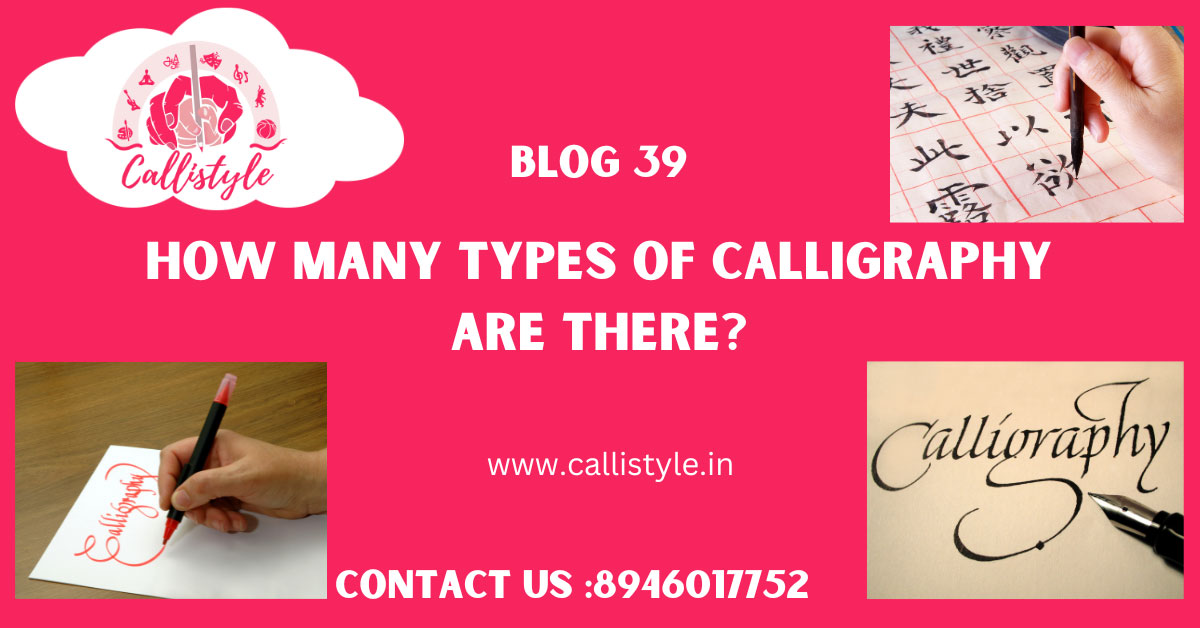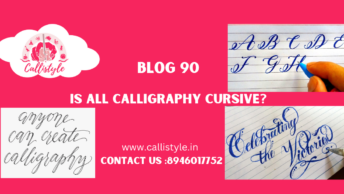How Many Types Of Calligraphy Are There? A Beginner’s Guide To Calligraphy Styles
How Many Types of Calligraphy Are There
Calligraphy, the art of beautiful handwriting, has been practiced for thousands of years across many cultures. From Chinese calligraphers using ink brushes to Medieval monks practicing blackletter script, the evolution of calligraphy is vast and fascinating. For beginning calligraphy students, understanding the different styles and techniques can feel overwhelming at first. So how many types of calligraphy are there exactly?

While there are countless scripts and hands within calligraphy, most styles fall into four major categories: Western calligraphy, East Asian calligraphy, Arabic calligraphy, and Indian calligraphy. Within these major groups, there are dozens of distinct hands and styles ranging from ancient, traditional scripts to modern calligraphy styles. By understanding the basics of each category, you’ll have a solid foundation to continue exploring the rich diversity calligraphy has to offer.
Western Calligraphy
Western calligraphy emerged from Roman scripts like rustic capitals and uncials and includes modern lettering like copperplate. Some major styles of Western calligraphy include:
Blackletter
Blackletter, also known as Gothic or Old English lettering, developed in the 12th century and was used for manuscripts and the first printed books. Blackletter features tall, narrow letters with angled strokes. Famous blackletter hands include Textualis, Rotunda, Schwabacher, and Fraktur.
Roman
Roman calligraphy was developed from ancient Roman capitals. Roman letters have proportions based on perfect circles and squares and feature serifs, small lines crossing the main strokes. Examples include Humanistic, Garamond, and Caslon.
Italic
Originating in Italy, italic styles slant to the right and have a handwritten look. Popular italic hands include chancery cursive, Pompeiian capitals, and copperplate.
Uncials
Uncials are an ancient Roman style with rounded, all-capital letters. Popular uncial hands include Half-Uncial and Insular Majuscule.
Rustic & Celtic
Rustic, Gaelic, and Celtic calligraphy have angled letters, woven ascenders and descenders, and decorative spiral flourishes. Think Book of Kells and Saint John’s Bible.
East Asian Calligraphy
East Asian calligraphy focuses on brush calligraphy using ink on absorbent paper. The four major East Asian calligraphy styles are:
Chinese Calligraphy
Chinese calligraphy has been practiced for over 2,000 years using ink brushes. Major Chinese scripts include Seal script, Clerical script, Cursive script, and Standard script.
Japanese Calligraphy
Japanese calligraphy originated from Chinese calligraphy. It consists of three main styles: Tensho, Reisho, and Gyosho.
Korean Calligraphy
Korean calligraphy includes Chusa and Idu styles. Korean scripts are written vertically to bottom.
Vietnamese Calligraphy
Vietnamese calligraphy combines Chinese hanzi characters and the Vietnamese alphabet. Major Vietnamese hands include Thảo and Lệ.
Arabic Calligraphy
Arabic calligraphy has been highly revered for over a thousand years as an art form. Major Arabic scripts include:
Kufic
One of the oldest Arabic scripts, Kufic features thick, angular letters commonly used on early manuscripts.
Naskh
Meaning “copy,” Naskh emerged as a readable alternative to Kufic. Naskh letters have rounder shapes and thinner strokes.
Thuluth
Thuluth is an elegant, cursive style often used for panel inscriptions and titles.
Nasta’liq
Nasta’liq combines Naskh and Taliq to create a flowing, slanted hand. It is a popular style for Persian calligraphy.
Diwani
Diwani was developed during the Ottoman Empire and has bold, prominent ascenders and descenders.
Indian Calligraphy
Indian scripts are among the world’s most ornate calligraphy styles. Major Indian hands include:
Devanagari
Used for Sanskrit and Hindi, Devanagari features round letters joined by a headstroke.
Punjabi
Punjabi calligraphy is an offshoot of the Sharada script with curved, swooping letters.
Bengali
Bengali letters have round shapes and thick, tapered downward strokes. Bengali is common in eastern India and Bangladesh.
Tamil
Originating in southern India, Tamil has round shapes and lots of curved lines that end in pointed tips.
As you can see, dozens of calligraphy hands exist across many cultures worldwide. Exploring the history and techniques of each script opens up an endless treasure trove of artistic styles to learn! While it may seem daunting at first, start with the basics in one of the major groups that appeals to you. With practice, you’ll be able to apply your skills to many types of calligraphy.
Getting Started with Calligraphy
Now that you have a broad overview of the many calligraphy varieties, how do you get started learning? Here are some tips:
Take a Class
Consider taking an in-person calligraphy class or workshop if available in your area. An experienced teacher can demonstrate techniques and provide hands-on guidance.
Buy a Beginner Kit
Affordable calligraphy starter sets provide basic tools like nibs, holders, ink, and guide sheets to learn. Start with black ink and traditional hands like Copperplate or Italic.
Learn the Basics
Master core skills like letterforms, spacing, angles, and pen manipulation. Use guide sheets at first and take it slow. Proper form is key before embellishing.
Analyze the Letters
Look closely at examples of various scripts to see what makes them distinct. Note things like proportions, slant, thick and thin strokes. Recreate individual letters before writing words.
Practice Consistently
Calligraphy requires muscle memory and repetition. Set aside dedicated time to practice every day. Over time, your hands will become more fluid, confident, and steady.
Learning calligraphy requires patience and perseverance, but gains are rewarding. With an array of mesmerizing scripts to explore, you’ll find a style that ignites your passion and creativity. Soon you’ll be flourishing beautiful works with your own hands. Welcome to the wonderful world of calligraphy!
Why Callistyle?
Callistyle is an ed-tech company that makes you fall in love with learning regardless of age, Callistyle can help you enhance your creativity and cognition with our Extracurricular creative courses.
With mentors who have over seven years plus experience, a unique teaching methodology, and satisfaction guaranteed, Callistyle is where you should consider joining.
- Register for Demo class.
- Certificate provided.
- Provides Individual attention
- Only two students in one batch.
- Flexible class schedule & timing.
- 12×7 doubts clarified
- Best results guaranteed!
- Flexible payment method.
- 7 years plus experienced Trainers.
- Assistance is provided post-course completion also.
Register for a Free Demo Class now!
Contact 8946017752 to know more about the courses.









